
At the end of the year, in preparation for the New Year, new shimenawa ropes are strung up at each shrine, and Shimenawa decorations are also placed on the front doors and cars of each household.
The origin of this shimenawa dates back to Japanese mythology. It is said that the shrine began when the gods tied Shirikume ropes around the Iwato to prevent Amaterasu Omikami from re-entering the Iwato after coming out of the Amanoiwato, meaning that entry was prohibited. so,Shimenawa is a barrier that marks the realm between gods and humans and prevents evil things from entering.But there was.
I walked around the streets of Kyoto at the end of the year looking for the shimenawa.
Although it was a little early to prepare for the new year, shrines are probably the place where you can see shimenawa all year round. What I noticed when I actually visited the place is,There are also different ways to stretch the shimenawa rope.That's it. The main type was a single letter shape stretched out like a single line, but there were also U-shapes with a sagging center and wave shapes.
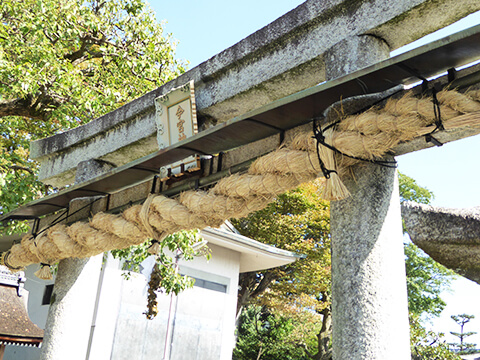
Shimenawa (one-character type) of Imamiya Shrine in Hanazono
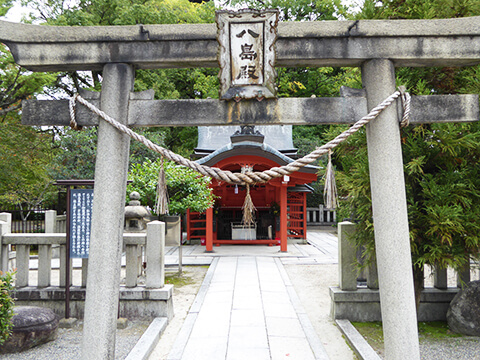
Yashimaden (U-shaped) in the precincts of Toji Temple
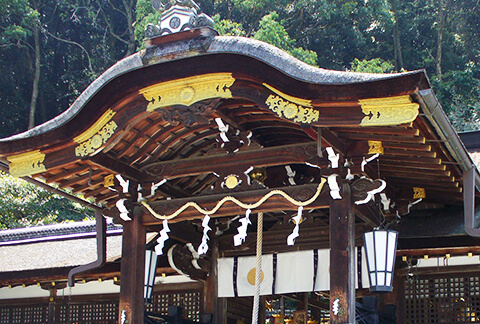
Shimenawa of Matsuo Taisha Shrine (waveform)
AlsoKyoto's five entertainment districts and long-established restaurantsThis is a place where you can see Shimenawa decorations all year round, although not all the shops are. Among them, the most commonly seenA daikon-shaped Shimenawa decoration with a thick center and a thin end.Attached to the fan-shaped hanging bundles of straw were a lucky board with the words ``Shoumon'' and ``Somin Mirai'' written on it, as well as paper tags.
We also saw the Gion Festival and Mt. Hashibenkei's power ropes. One year period,Shimenawa decorations, which have continued to protect the purity of the red light district, have a different flavor from those used at home.It was interesting, and the beauty of the cityscape made me feel very refreshed.
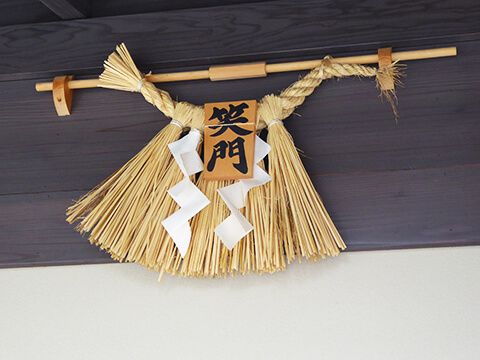
Shimenawa I encountered in Gion Kobu
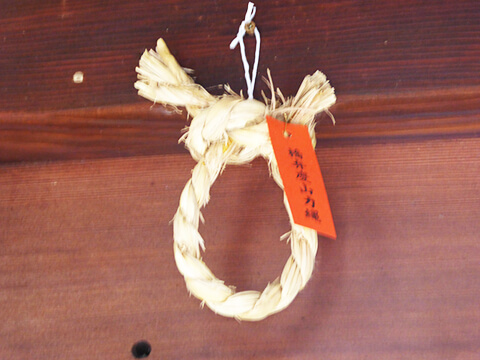
The power rope of Mt. Hashibenkei that I encountered in Pontocho
However, if you ask someone who is engaged in the work of God,Shimenawa is not only used to exorcise evil spirits and mark boundaries with sacred places.That's it. Shimenawa, etc. to seal the tatari, etc.Possesses powerful magic binding powerThere are some things, so it's better not to touch them recklessly.
By the way, I once came across the following interesting information during an interview on ``Kyoto's folk beliefs and customs.'' It is said that up until the middle of the Showa era, there was a town in Kyoto where a strange custom called ``Shinin Hiki'' was passed down.
Seven-day hiki means that when a person dies on the third day of the New Year, seven people will die one after another in the town, and it is said that deaths on the third day of the New Year were abhorred. It's so irresistible that one dead person takes seven people on a journey to death. However, it doesn't matter whether a person lives or dies. So, what would you do if someone died on the third day? To prevent demons (the god of death) from entering the town, they would surround the town with shimenawa ropes to create a barrier and mourn. Even now, more than half a century later, many people still believe in this strange practice.
Until now, I had only a vague image of shimenawa as something strung up at shrines or as a New Year's decoration, but when I think of it as a barrier, I feel a different way of thinking about year-end preparations. We want to welcome the new year in a pleasant manner by putting on shimenawa decorations, removing the grime of the past year, and preparing to create a clean space to welcome the gods.
Tradition that exists everywhere in the city of Kyoto. It is not just a picture, it is secretly alive in this modern age and continues to coexist with people. The two of Office TO, who previously wrote a series of articles "Kyoto's Demon World Exploration" in the monthly magazine Leaf, explore the mysterious "different" world of Kyoto, which was created over 1200 years. I will unravel the story while actually visiting the place. .
 News
News Feature article
Feature article Featured event
Featured event